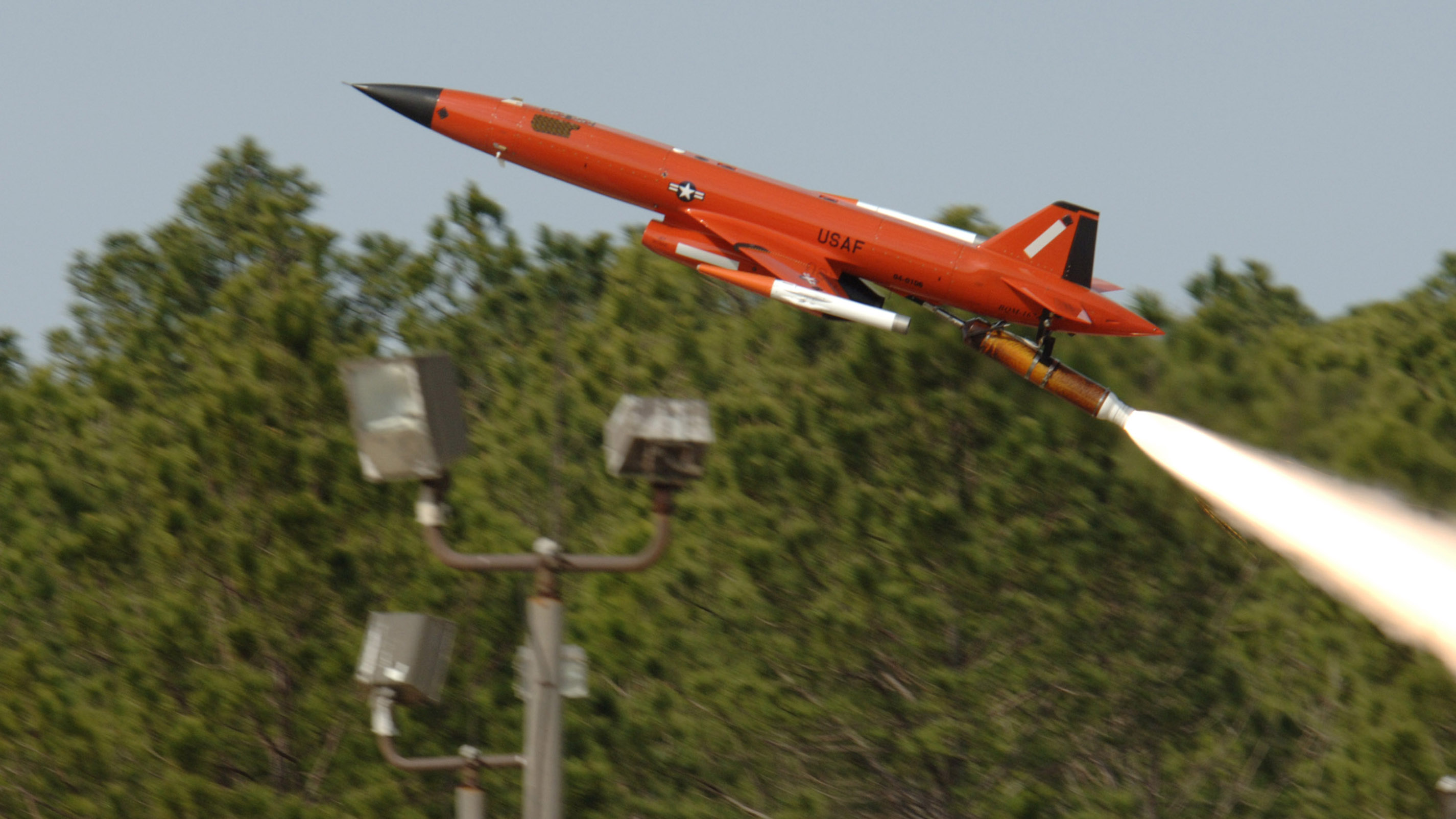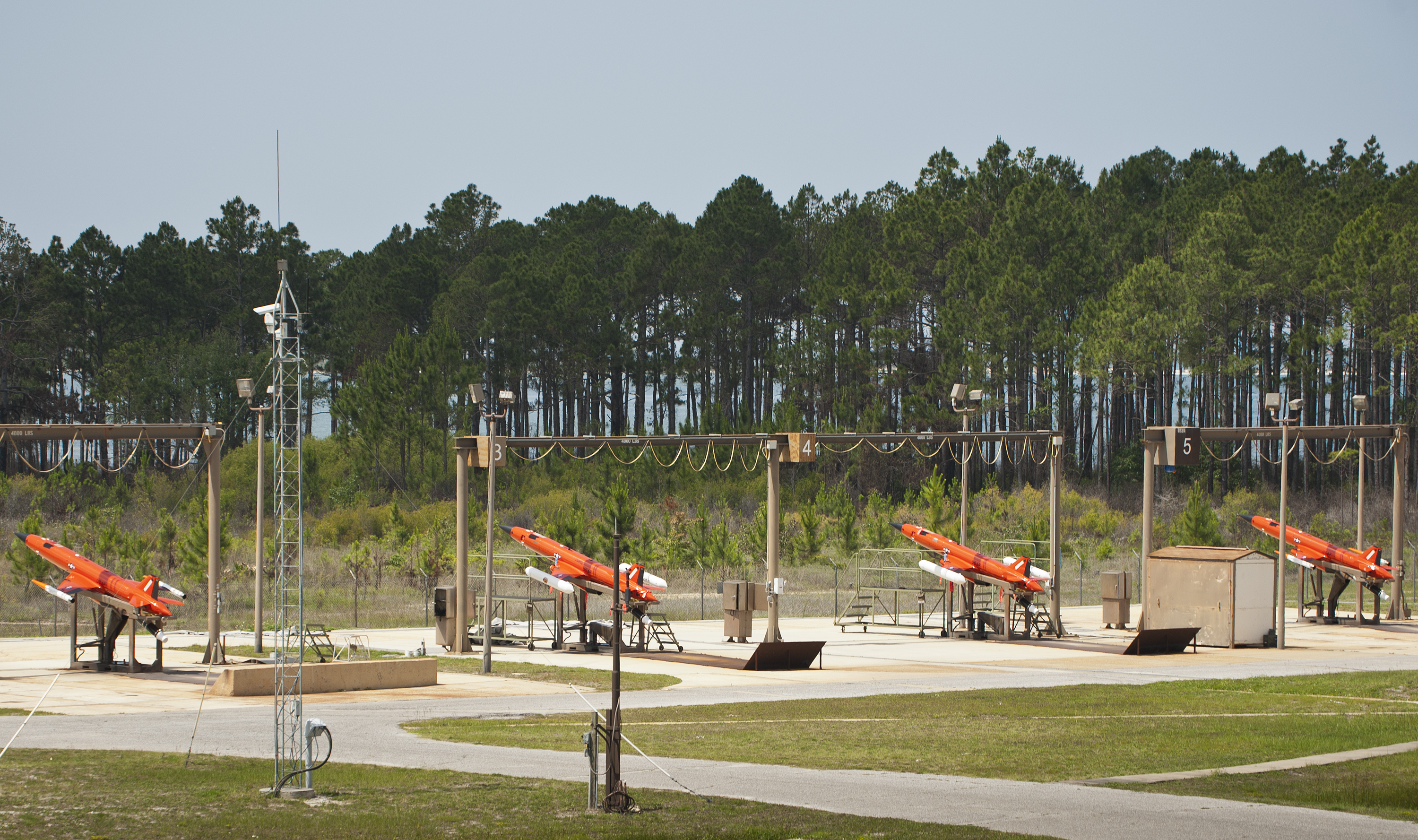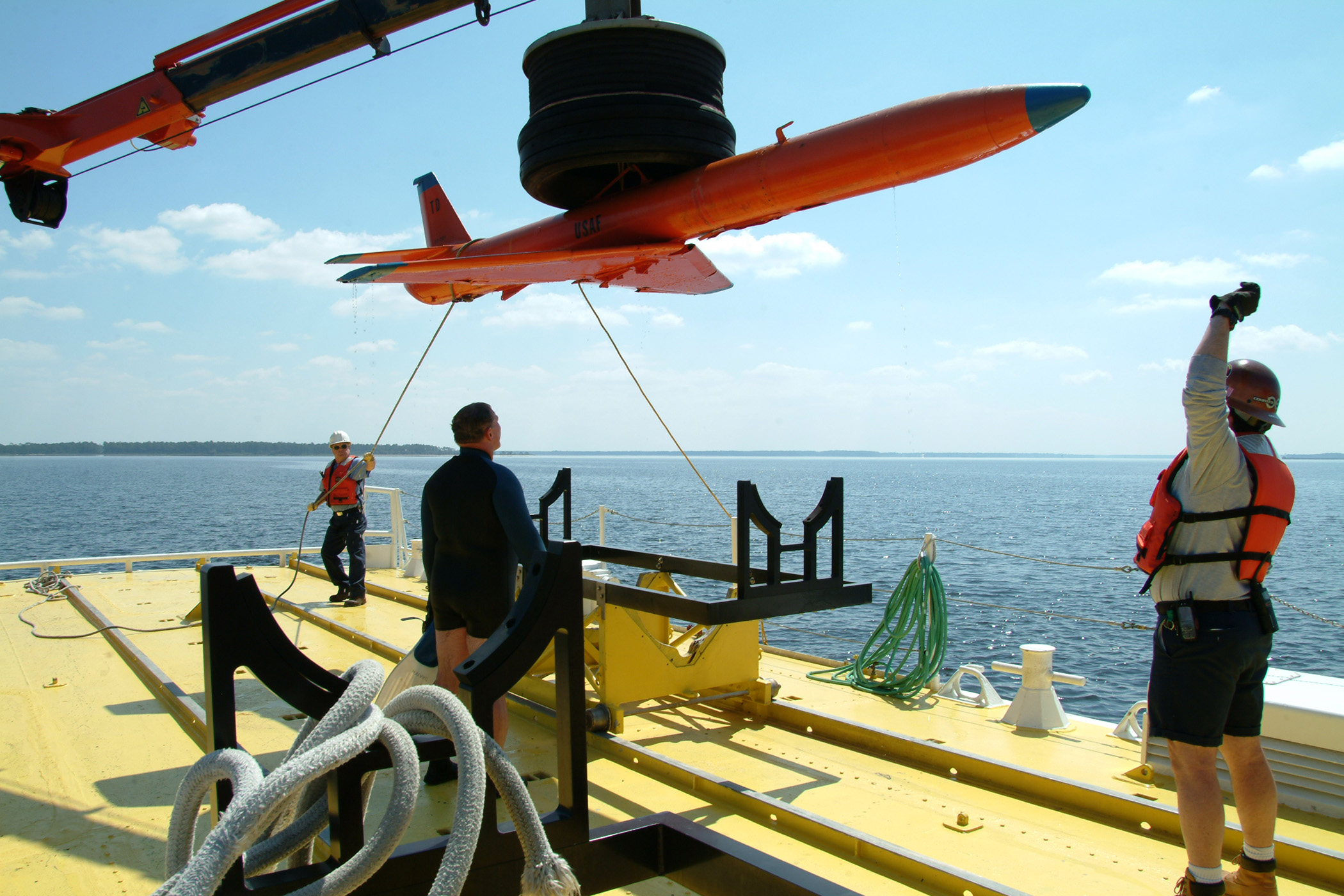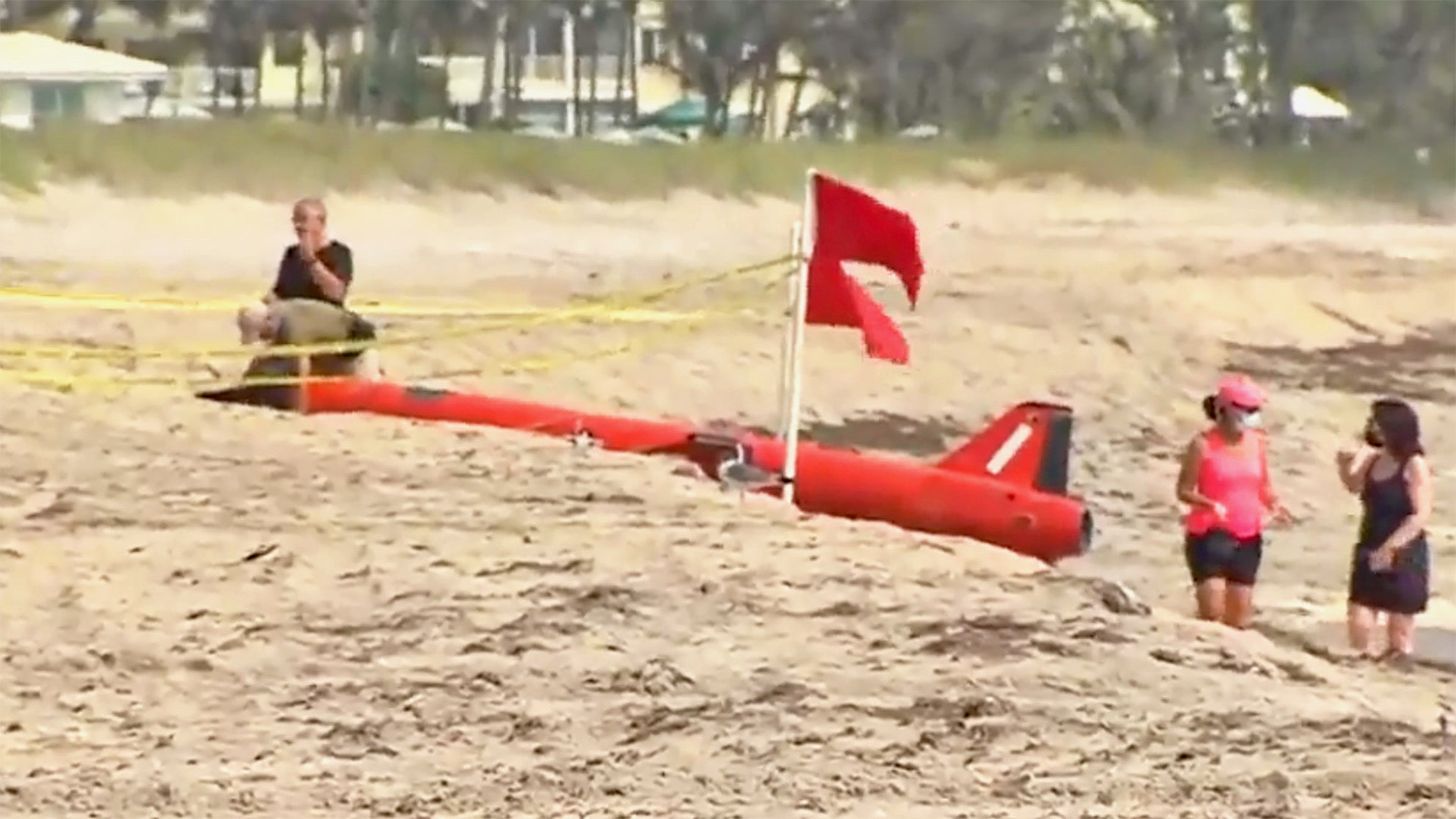Beachcombers in Florida’s Palm Beach County had the chance to uncover something very unusual that washed up with the tide early this morning, a U.S. Air Force BQM-167A target drone. The 20-foot-long high-performance aerial target was found on the waterline at the north end of Ocean Ridge Hammock Park, south of West Palm Beach.
After a member of the public raised the alert, the local police secured the area while the relevant authorities were notified. The area of the beach was then made secure, while Air Force personnel began the process of removing the drone, according to a report from the local news outlet WPTV.

An Air Force Subscale Aerial Target (AFSAT), the BQM-167A is produced by drone manufacturer Kratos and is used for the test and evaluation of new air-to-air weapons as well as for training pilots during live-fire exercises. It has been in use since 2007.
“The primary role of the BQM-167A is to provide the U.S. Air Force aviators with the world’s most realistic and comprehensive end-to-end weapons-release training,” according to the manufacturer.
Powered by a MicroTurbo TR 60-5 turbojet engine producing 1,000 pounds of thrust, the BQM-167A can fly at speeds up to Mach 0.91 and at altitudes between 50 feet and 50,000 feet. It’s also agile, being able to maneuver at up to 9G.
The drone can also be reconfigured for the type of mission required, including radar augmentation to present a larger target, or infrared “plume pods” for luring heat-seeking missiles and IR sensors. Other options, both internal and external, include scoring systems, identification friend or foe (IFF), and chaff and flare countermeasures to spoof missiles and sensors.
The basic design of the BQM-167A has also been used as the basis for the UTAP-22 Mako, the first low-cost loyal wingman drone to be made available for sale. The UTAP-22 can fly as high as 50,000 feet and can carry 350 pounds of stores internally and 200 pounds externally for three hours or nearly 1,500 miles. A highly modified UTAP-22 has also been used for experiments with air-launching from an F-15C fighter, a program that you can read more about here.

After taking off from a rail launcher on land, using a rocket booster before the turbojet takes over, the drone can be recovered by a parachute recovery system either from land or water — providing it hasn’t been shot down first.
Florida is a hotspot for BQM-167A drone activity, with regular exercises and evaluations in which the targets, operated by the 82nd Aerial Targets Squadron out of Tyndall Air Force Base, are blasted out of the sky over the Gulf of Mexico.
Indeed, the Air Force has a handful of 120-foot boats, the only vessels in its service, to help recover drones after they are shot down during live-fire exercises, or otherwise need to be recovered from these waters. The boats are operated by a contracted crew from Florida Offshore and retrieve around 100 of the drones each year.

While its job is relatively unknown to the wider public, the BQM-167A plays a vital role in proving the reliability of in-service weapons systems, as well as proving out cutting-edge technology before it’s fielded. For example, when an F-16C fighter demonstrated the suitability of using a laser-guided 70mm rocket for shooting down incoming cruise missiles in 2019, it was a BQM-167A that served as the simulated cruise missile threat.
Initial imagery of the drone on the Florida beach today suggested that it was mainly undamaged and since it’s intended to be reused, and comes with a price tag of $570,000, it is probable that this particular BQM-167A will live to fly, and fight, another day.
In the meantime, we will update this story if and when more details emerge.
Update: 7:00pm CET
Some additional photos of the Florida beach drone have emerged, now showing it much more up close. These were clearly taken before the police secured the area around the BQM-167A since in several of the images a person can be seen sitting atop it. Also noteworthy — and a very good reason not to sit on the drone — are the ejection tubes in the upper forward fuselage for chaff and flare cartridges, which seem to be at least partly loaded. Take a look here and here.
Contact the author: thomas@thedrive.com
